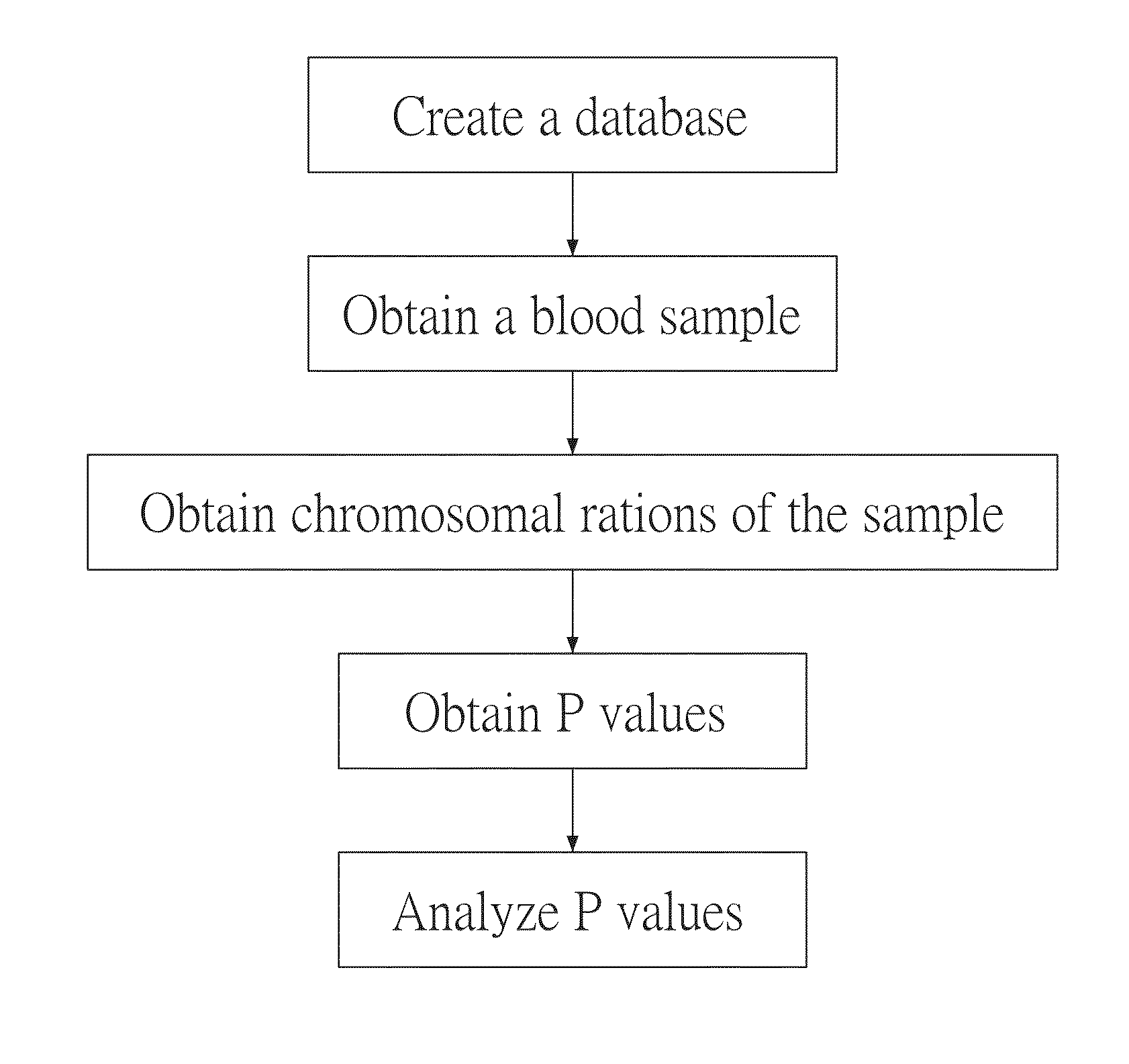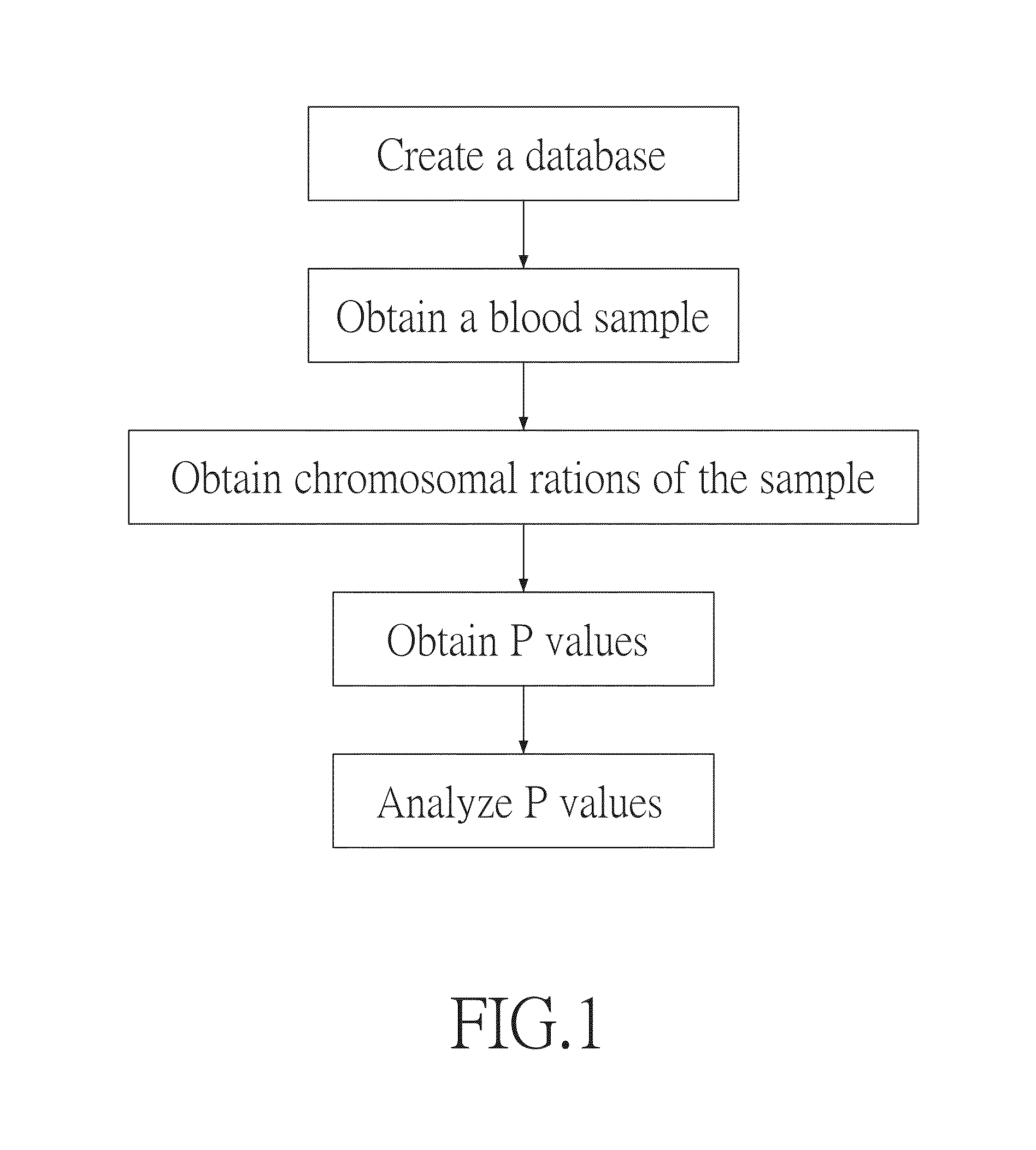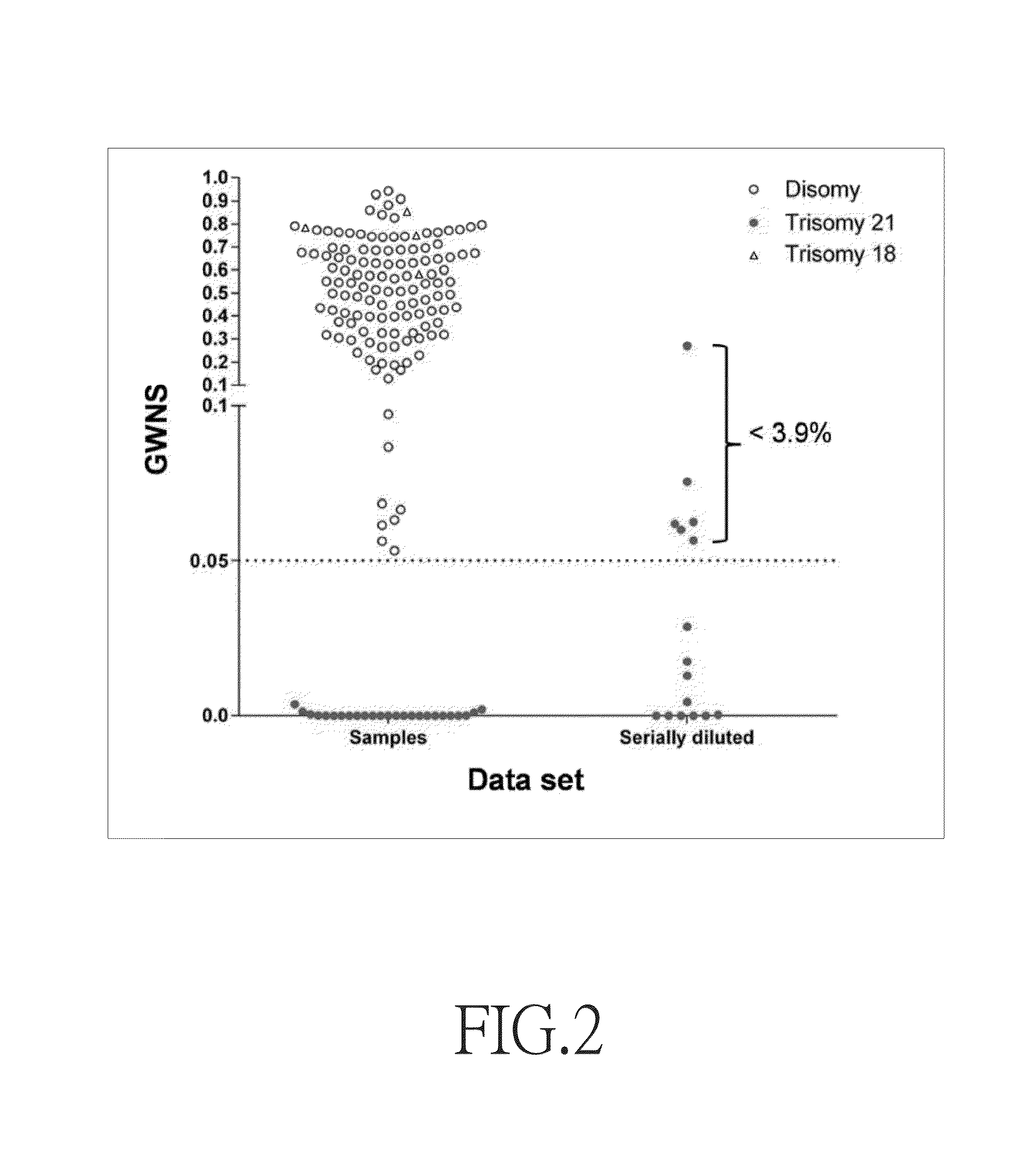Non-invasive prenatal testing method based on whole-genome tendency scoring
a whole-genome tendency and prenatal testing technology, applied in the field of prenatal examination methods, can solve the problems of aforesaid innovative technique still flawed with errors, carry a 0.1% to 0.2% chance of miscarriage, and a 0.05% chance of physical injury to the fetus, and achieve the effect of high precision
- Summary
- Abstract
- Description
- Claims
- Application Information
AI Technical Summary
Benefits of technology
Problems solved by technology
Method used
Image
Examples
Embodiment Construction
[0025]Like components described hereunder are denoted with like reference numerals.
[0026]Referring to FIG. 1, there is shown a diagram of a non-invasive prenatal testing method based on whole-genome tendency scoring according to a preferred embodiment of the present invention and adapted to test whether a pregnant woman's fetus has autosomal aneuploidy. The testing method comprises the steps of:
[0027](a) creating a database: obtaining and treating chromosome cell-free DNA fragment counts in at least one pregnant woman's plasma as a control sample to thereby obtain a mk value, wherein the pregnant woman and the pregnant woman's fetus do not have chromosomal quantity abnormality, wherein the mk value equals the average of the length proportions of chromosome k, where k=1, 2, . . . , 22, and Σk=122mk=1;
[0028](b) obtaining a blood sample: obtaining the pregnant woman's blood. sample and separating plasma from the blood sample;
[0029](c) obtaining chromosome ratios: obtaining from the pre...
PUM
 Login to View More
Login to View More Abstract
Description
Claims
Application Information
 Login to View More
Login to View More - R&D
- Intellectual Property
- Life Sciences
- Materials
- Tech Scout
- Unparalleled Data Quality
- Higher Quality Content
- 60% Fewer Hallucinations
Browse by: Latest US Patents, China's latest patents, Technical Efficacy Thesaurus, Application Domain, Technology Topic, Popular Technical Reports.
© 2025 PatSnap. All rights reserved.Legal|Privacy policy|Modern Slavery Act Transparency Statement|Sitemap|About US| Contact US: help@patsnap.com



